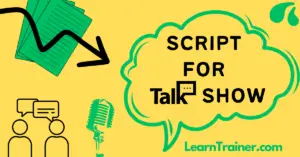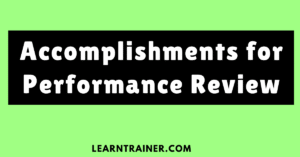You’ve probably been in a situation where someone says, “Excuse me.” It’s a common phrase, but how should you respond?
Whether you’re navigating a crowded street, at work, or simply in a casual setting, your response to “Excuse me” can say a lot about you and shape the interaction.
A simple “excuse me” can be a polite request for attention, help, or even a question, and how you respond can make or break the conversation.
In this post, I’ll guide you through the different scenarios where you might hear “excuse me” and provide you with the best, most fitting responses.
From casual conversations to formal situations, I’ll cover everything you need to know, including common mistakes to avoid, examples, and even a handy table to help clarify things.
What Does “Excuse Me” Really Mean?
Before jumping into the responses, let’s break down the phrase itself. “Excuse me” is often used as a polite way of getting someone’s attention, interrupting a conversation, or asking for help.
It shows respect and consideration for the other person’s time and space. Understanding this helps you determine how to respond appropriately.
There are different reasons why someone might use “excuse me,” and your answer will depend on the context.
- Getting Your Attention: When someone wants to address you or ask a question.
- Polite Interruptions: Used when someone is trying to cut in without being rude.
- Apology or Acknowledgment: Sometimes, it’s used when someone needs to apologize or get past you.
- Requesting Something: This is used when someone needs help or information.
When Someone Wants to Get Your Attention
When someone says, “Excuse me,” and they’re trying to get your attention, your response should acknowledge that you’re ready to listen. How you respond depends on the setting and your relationship with the person.
Casual Responses:
- “Oh, hey! What’s up?”
- “Yeah? What’s going on?”
- “Hey, what’s up? How can I help?”
These responses are light-hearted and friendly, perfect for when you’re with friends or in informal settings.
Formal Responses:
- “Yes, how can I assist you?”
- “Hello, can I help you with something?”
- “How may I help you today?”
These formal replies work well in professional environments, around strangers, or in any situation where you want to maintain politeness and a more serious tone.
Example:
Let’s say you’re walking through a store and a person says, “Excuse me,” while you’re looking at some items. If it’s a colleague or a friend, a casual “Oh hey! What’s up?” works perfectly. But if it’s someone you don’t know, responding with, “Yes, how can I assist you?” is a more respectful and formal way to engage.
When Someone Needs Help or Information
When someone says “Excuse me” and asks for help, directions, or information, you want to respond in a way that’s helpful, friendly, and clear. Offering assistance shows that you’re attentive and willing to help.
Casual Responses:
- “Sure, what do you need help with?”
- “What’s up? What can I do for you?”
- “Yeah, what’s going on?”
These responses are informal and come across as easygoing, perfect for situations where you’re in a relaxed setting and have the time to help.
Formal Responses:
- “Certainly, how may I assist you?”
- “Of course, what do you need?”
- “Yes, I’d be happy to help. What can I do for you?”
In a more professional context, these responses help convey respect while offering assistance. They show you are eager to help while maintaining a professional tone.
Example:
Imagine you’re at a crowded event, and someone approaches you asking for directions. A casual response like, “Sure, what do you need help with?” would work if you’re in a laid-back situation. However, at a business conference or seminar, you might say, “Certainly, how may I assist you?” to maintain professionalism while still offering help.
When Someone is Apologizing or Making a Request
Sometimes, “Excuse me” is used when someone is apologizing or requesting permission to interrupt. In these situations, it’s important to respond with understanding and empathy.
Casual Responses:
- “No worries, what’s up?”
- “It’s okay, what do you need?”
- “Hey, it’s fine. How can I help?”
These responses are forgiving and convey that you understand the interruption or apology, especially when the situation doesn’t require a serious tone.
Formal Responses:
- “Not at all, how can I help you?”
- “Of course, what can I do for you?”
- “It’s no problem. How may I assist?”
These responses show that you acknowledge the apology or request while keeping the tone polite and respectful.
Example:
Let’s say you’re at work, and a colleague says, “Excuse me, I didn’t mean to interrupt.” A casual response like, “No worries, what’s up?” shows that you’re not bothered. But if you’re dealing with a client or superior, a formal response such as, “Not at all, how can I help you?” would convey professionalism and politeness.
Common Mistakes to Avoid
While responding to “Excuse me” might seem simple, there are a few common mistakes that people often make. Here are some things to avoid:
Being too abrupt or dismissive: A cold “Yeah?” or ignoring the person altogether can come across as rude or disinterested.
Not matching the tone: If someone uses a formal tone, it’s important to respond in a similarly respectful manner. Responding too casually can seem disrespectful.
Interrupting before they finish: Always let the other person speak fully before responding. Cutting them off can be seen as rude or inconsiderate.
Forgetting to offer help: If someone asks for help, make sure you offer assistance—don’t just acknowledge them and walk away.
Table: Appropriate Responses for Different Contexts
| Scenario | Casual Response | Formal Response |
| Getting Someone’s Attention | “Oh, hey! What’s up?” | “Yes, how can I assist you?” |
| Asking for Help or Information | “Sure, what do you need help with?” | “Certainly, how may I assist you?” |
| Making a Request or Apology | “No worries, what’s up?” | “Not at all, how can I help you?” |
| Polite Interruptions | “Yeah? What’s going on?” | “Hello, how may I help?” |
Conclusion
In conclusion, when someone says “Excuse me,” it’s an opportunity for you to respond in a way that’s considerate, polite, and appropriate to the situation.
Whether you’re in a casual or formal setting, knowing how to respond correctly can improve your interactions and leave a lasting positive impression.
Remember to listen, acknowledge, and respond with the right tone, depending on the context.
By following the advice in this guide, you’ll be able to handle any “Excuse me” situation with confidence and ease. So next time you hear those two words, you’ll know exactly what to say!
FAQ:
Should I always use “excuse me” when trying to get someone’s attention?
Yes, “excuse me” is a polite and respectful way to gain someone’s attention without being too forceful or abrupt.
What’s the best response to “Excuse me” in a professional setting?
In a professional setting, it’s important to respond with formal phrases like “Yes, how can I assist you?” or “How may I help you today?” to maintain respect and professionalism.
How can I sound more natural when responding to “Excuse me”?
To sound more natural, try to match the tone and vibe of the situation. If it’s a casual conversation, a friendly “What’s up?” can feel more relaxed. For more formal situations, use phrases like “How may I assist you?” to stay polite and professional.


